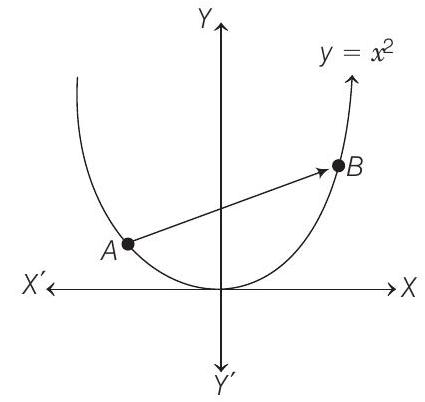Application of Derivatives 4 Question 49
####52. What normal to the curve
(1992, 6M)
Show Answer
Answer:
Correct Answer: 52.
Solution:

Any point on the parabola
Now,
Which is the slope of the tangent. So, the slope of the normal to
Therefore, the equation of the normal to
Suppose Eq. (i) meets the curve again at
Therefore, length of chord,
On differentiating w.r.t.
For maxima or minima, we must have
Now,
Therefore,
Again, when
and when






